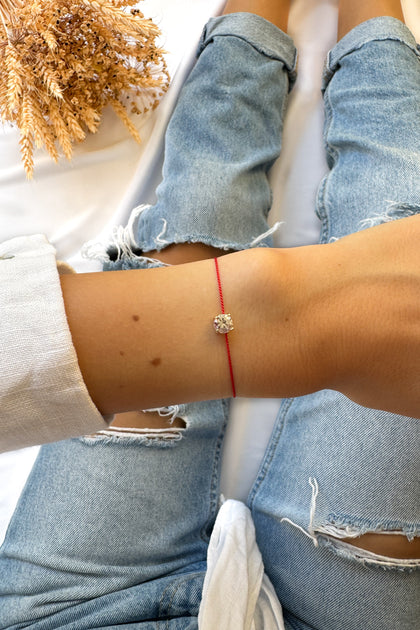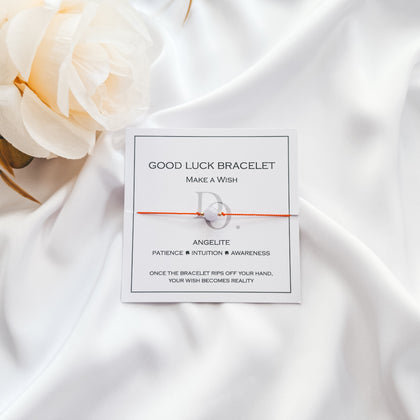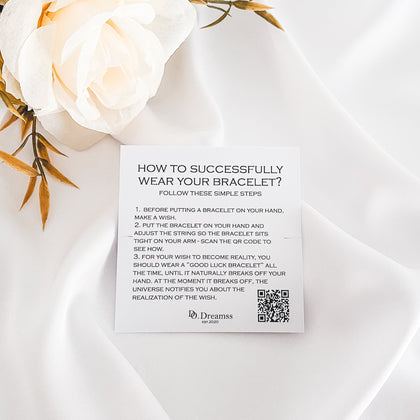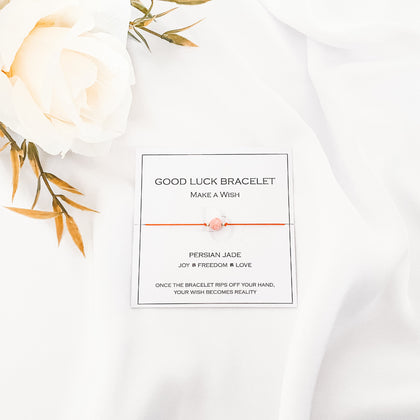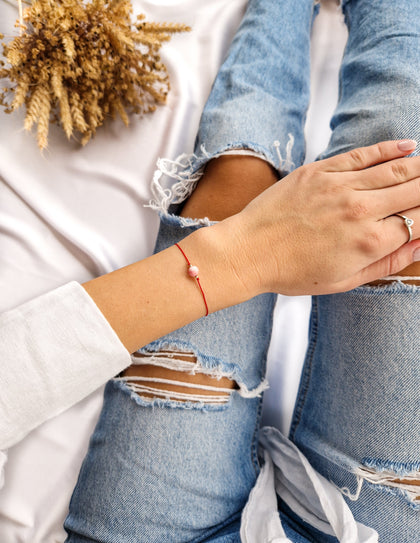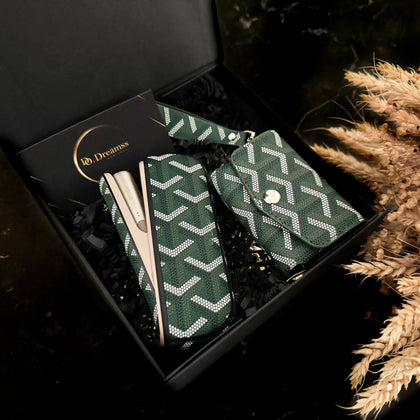The Lucky Edit by Do.Dreamss
The Benefits of Handmade Jewelry: Unique Style and Lasting Meaning
In a world dominated by mass production, handmade jewelry stands as a testament to human creativity and craftsmanship. These artisan-created pieces offer more than just adornment—they carry stories, reflect individuality, and provide lasting value that machine-made alternatives simply cannot match. As consumers increasingly seek authenticity and meaning in their purchases, the appeal of handmade jewelry continues to grow. In today's world, discovering recent jewelry trends and insights can inspire new appreciation for artisan pieces.
Throughout this article, you'll discover why handmade jewelry delivers exceptional quality, emotional significance, and ethical benefits that make these pieces truly special. From the unique character that sets handmade items apart to the positive impact your purchase can have on artisan communities, let's explore the multifaceted advantages of choosing handcrafted over mass-produced jewelry.
What makes handmade jewelry unique?
Handmade jewelry possesses an inherent uniqueness impossible to replicate in factory settings. While mass-produced pieces roll off assembly lines identical to one another, artisan-created jewelry bears the subtle marks of its maker—the slight variations that signal human touch and creative intention. Each handcrafted piece tells its own story, from conception to completion.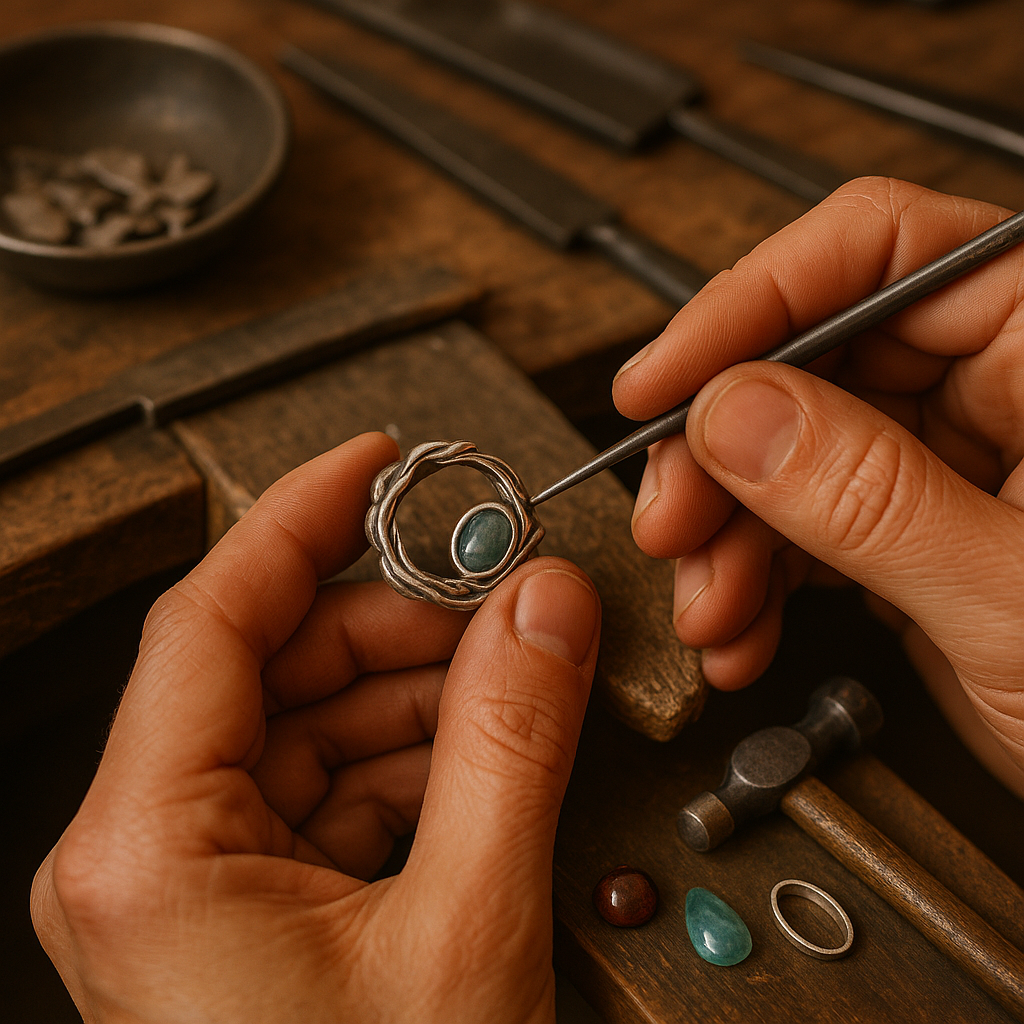
The individuality of handmade jewelry extends beyond aesthetic differences. Artisans often design with personal inspiration, cultural influences, and artistic vision that infuse pieces with character and meaning. Many creators draw from nature, architecture, personal experiences, or historical traditions to develop distinctive styles that set their work apart.
Custom-designed pieces take uniqueness even further, allowing wearers to own jewelry that perfectly expresses their personal style or commemorates special moments. This level of personalization remains largely unavailable in mainstream retail jewelry, where standardization is the norm.
Examples of personal touches
Artisan jewelers incorporate personal touches that transform basic accessories into meaningful treasures. Hand-hammered textures, intentionally asymmetrical designs, and hand-set stones each reflect the creator's distinct approach.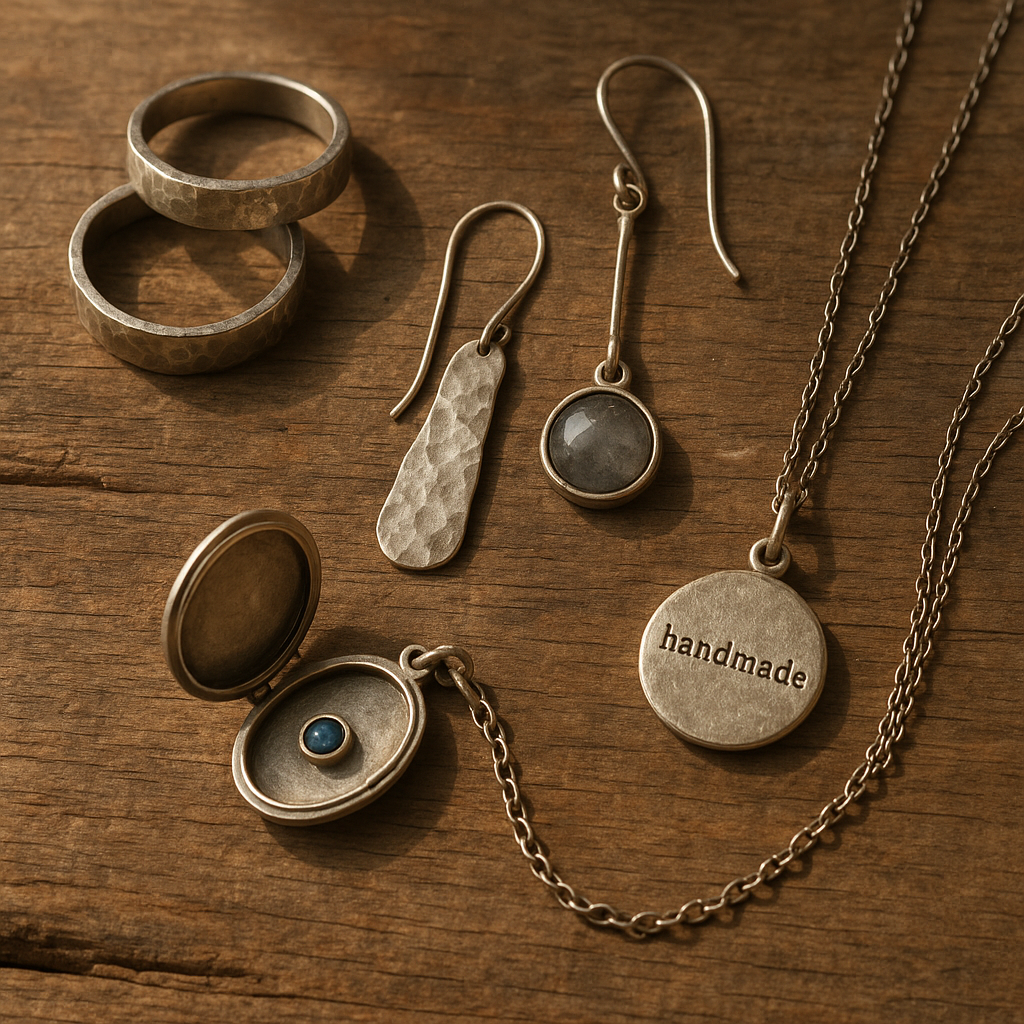
Many makers sign their work, incorporate maker's marks, or include small details visible only to the wearer—like a tiny gemstone hidden inside a locket or an engraved message on the underside of a pendant.
Custom elements frequently reflect meaningful connections between maker, buyer, and recipient. Birthstones arranged to represent family members, metal from heirloom jewelry repurposed into new designs, or shapes that symbolize significant life events all add layers of meaning beyond decoration. Explore our newest collection to see how handmade pieces can reflect current design trends while maintaining distinctive artisan character.
Superior craftsmanship and lasting quality
The craftsmanship evident in handmade jewelry often surpasses that of mass-produced alternatives. Artisan jewelers typically spend hours, sometimes days, perfecting a single piece—a stark contrast to factory production where speed and volume drive the process. This attention to detail results in stronger connections, better finishes, and more durable construction.
Experienced creators understand how different metals behave, how stones should be properly set, and how to create secure closures that withstand regular wear. They frequently check their work at multiple stages, making adjustments impossible in automated production lines. Many artisans stand behind their work with guarantees or repair services, reflecting confidence in their craftsmanship.
Quality materials complement skilled workmanship in handmade jewelry. Independent jewelers often select higher-grade metals, gemstones, and findings than those used in mass production, where profit margins typically drive material choices. These superior components contribute to jewelry that maintains its beauty and integrity for decades rather than seasons.
Materials and techniques
Artisan jewelers frequently work with recycled precious metals, reducing environmental impact while ensuring quality. Sterling silver, gold in various karats, and alternative metals like bronze or brass often form the foundation of handmade pieces. Many creators source ethically mined or lab-grown gemstones, carefully selecting each stone for color, clarity, and character rather than accepting bulk shipments of standardized gems.
Traditional techniques like lost-wax casting, metalsmithing, wire-wrapping, and beading allow artisans to create intricate designs impossible to achieve through mass-production methods.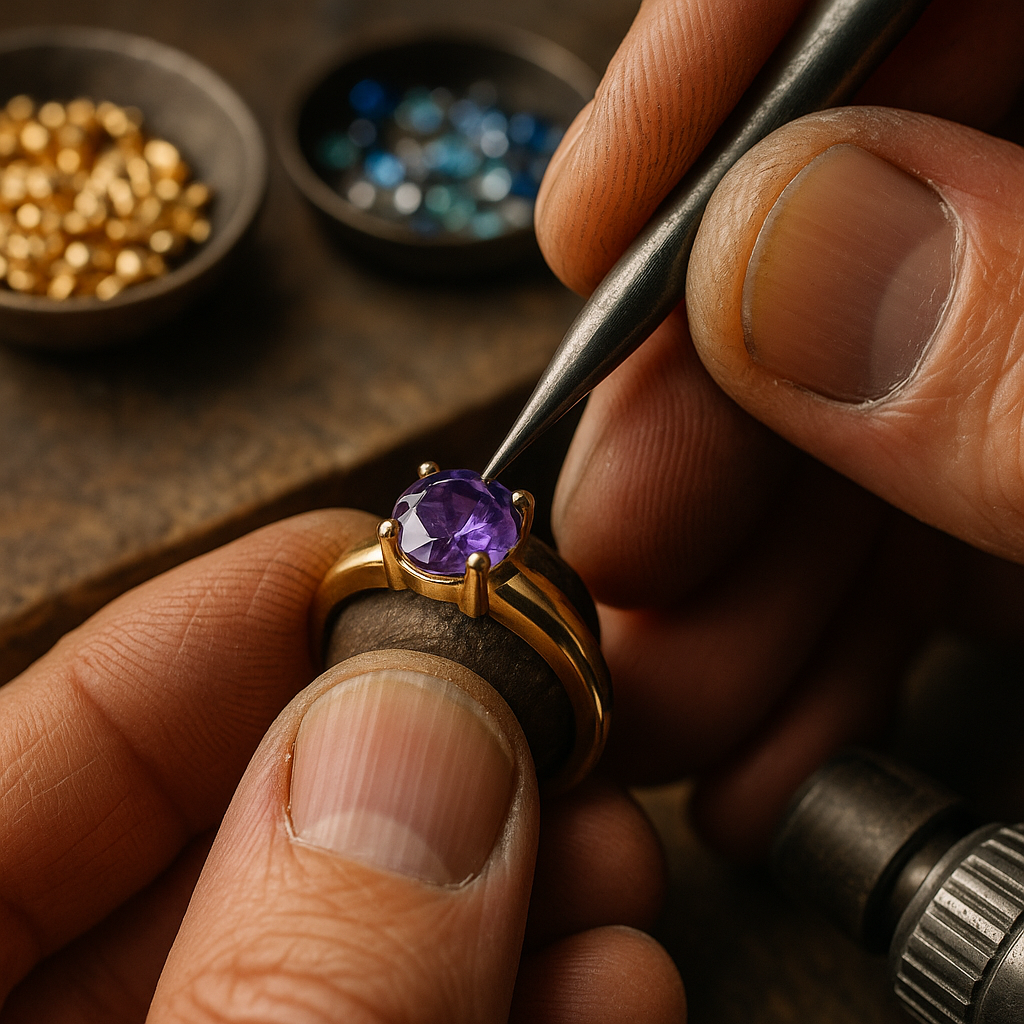
Some jewelers combine these time-honored approaches with modern innovations like 3D printing for prototypes or laser-cutting for precision, creating unique fusion styles that honor craftsmanship while embracing technology.
Hand-finishing touches—polishing to a perfect shine, creating intentional patinas, or adding texture with specialized tools—elevate handmade jewelry beyond machine capabilities. These labor-intensive steps require skill developed through years of practice, resulting in exceptional pieces that stand apart from their mass-produced counterparts.
Emotional & sentimental value
Handmade jewelry carries emotional significance that transcends its physical properties. The knowledge that someone created a piece with care and intention—rather than programming a machine—infuses it with humanity. This emotional connection begins with the maker and extends to the wearer, often deepening over time as the jewelry accompanies life's meaningful moments.
Sentimental value develops especially strongly in personalized pieces created to mark significant milestones. Custom wedding bands, birthstone jewelry for new parents, or commemorative pieces that honor achievements or remember loved ones become tangible reminders of life's most precious experiences. These meaningful gifts often become cherished possessions passed through generations.
"I gave my mom a custom birthstone necklace with gems representing each grandchild," a customer shared. "She wears it daily and says it feels like carrying her family close to her heart." This testimonial illustrates how handmade jewelry becomes more than accessory—it transforms into a physical embodiment of relationships and memories.
The story behind handmade pieces adds another layer of significance. Knowing where and how jewelry was created, sometimes even meeting the artist, creates a narrative that becomes part of the wearing experience. This contrasts sharply with mass-produced items that lack provenance or personal connection. Exploring current gift ideas and trends reveals how handmade pieces are increasingly preferred for special occasions precisely because of this emotional resonance.
Ethical and sustainable choices
Sustainable jewelry practices generally define the handmade sector, where small-scale production naturally minimizes environmental impact. Artisan workshops typically consume significantly less energy than large manufacturing facilities, generate minimal industrial waste, and often emphasize local sourcing to reduce transportation emissions.
Many independent jewelers prioritize responsible material sourcing, using recycled metals that eliminate the need for environmentally damaging mining. Others work with suppliers who guarantee ethical practices for gemstone extraction, ensuring their creations don't contribute to exploitation or environmental destruction. These conscious choices allow consumers to wear beautiful jewelry without ecological or humanitarian concerns.
Packaging and shipping practices in handmade jewelry businesses frequently reflect the same eco-friendly values. Reused materials, biodegradable packaging, and minimal plastic usage demonstrate environmental commitment extending beyond the jewelry itself. These small-scale, thoughtful approaches stand in stark contrast to industrial jewelry production's substantial carbon footprint.
The longevity of well-crafted handmade jewelry contributes to sustainability by reducing the "disposable fashion" cycle. Quality pieces stay in circulation longer, requiring fewer resources over time than repeatedly replacing poorly made items. Discover responsibly crafted artisan pieces that combine ethical materials with exceptional design for truly conscious accessorizing.
Supporting artisans & local economies
Supporting small businesses through handmade jewelry purchases creates direct economic impact that extends beyond the artisan.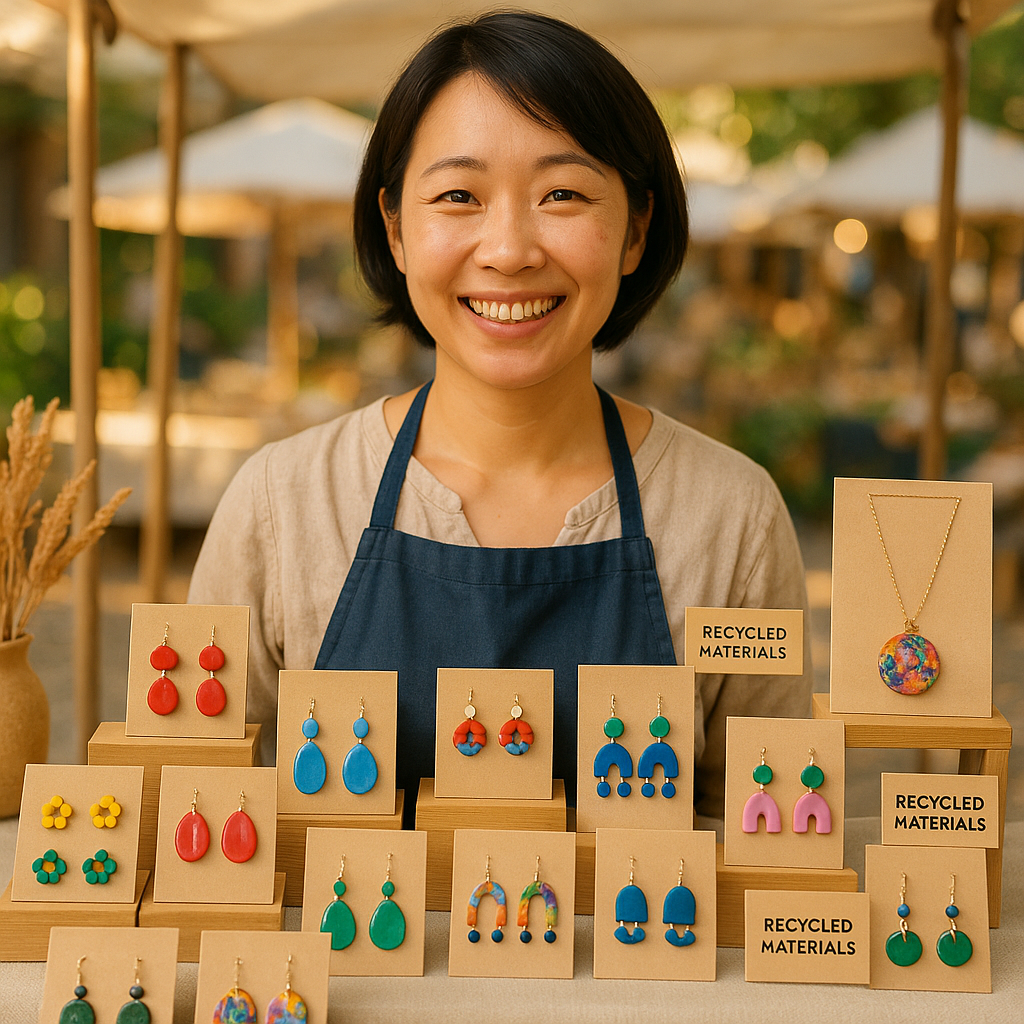
When you buy from independent creators, your money flows directly to real people rather than faceless corporations. These transactions allow jewelry artists to sustain their livelihoods while practicing their craft, often supporting families and communities in the process.
Local artisans typically reinvest in their communities, creating a positive economic ripple effect. They frequently source materials from other small businesses, hire local assistants when expanding, and contribute to their neighborhood economies through everyday spending. This localized circulation of funds strengthens community resilience and economic diversity.
Beyond immediate financial benefits, purchasing handmade jewelry helps preserve traditional crafts that might otherwise disappear. Many contemporary jewelry artists incorporate techniques passed down through generations, maintaining cultural heritage through continued practice. By supporting these creators, consumers help ensure these specialized skills continue into the future.
The human connection in handmade jewelry extends to meaningful interactions between makers and customers. Many artisans develop relationships with their clientele, creating custom pieces for special occasions or designing collections inspired by community feedback. These connections foster mutual appreciation and understanding impossible in mass-market retail experiences. Browse our full range of unique artisan jewelry to experience the difference handmade quality makes.
Handmade jewelry delivers incomparable benefits that extend far beyond adornment. Each artisan-created piece offers distinctive character impossible to find in mass-produced alternatives, superior craftsmanship that ensures lasting quality, and emotional resonance that transforms accessories into meaningful keepsakes. The sustainability advantages of small-scale production combined with the positive economic impact of supporting independent creators make handmade jewelry a choice that aligns with conscious consumer values.
Whether seeking a meaningful gift, a distinctive personal statement, or an heirloom-quality investment, handcrafted jewelry provides unique style with lasting significance. The connection between maker, wearer, and sometimes recipient infuses these pieces with humanity and intention absent from factory-made items. As you consider your next jewelry purchase, remember that choosing handmade means selecting exceptional quality, individual character, and positive impact—benefits that continue to deliver value long after the initial transaction.
Frequently asked questions
What is handmade jewelry and how is it different from mass-produced jewelry?
Handmade jewelry is crafted individually by skilled artisans using traditional or modern tools, resulting in unique, one-of-a-kind pieces—not uniform, machine-made replicas.
Is handmade jewelry higher quality than machine-made jewelry?
Typically yes, because artisans spend more time on each item, select high-quality materials, and maintain strict craftsmanship standards.
How do I care for handmade jewelry to ensure its longevity?
Store pieces carefully, clean using non-abrasive methods, and follow maker recommendations—handmade pieces often come with care instructions due to their unique materials.
Are handmade jewelry pieces more sustainable or ethical?
Often, yes. Artisans may use recycled or responsibly sourced materials and produce with less environmental impact compared to mass production.
Can handmade jewelry be customized or personalized?
Absolutely. Customization is one of the main appeals—buyers can request engravings, stone choices, or design tweaks to mark special moments or reflect personal style.


